The U.K. Royal Navy has revealed details of its intention to fit its two aircraft carriers with assisted launch systems and recovery gear, enabling operations by a variety of fixed-wing uncrewed aircraft and, potentially, also conventional takeoff and landing crewed types. Ambitious in its scope, it’s unclear exactly how much of the program will be fiscally feasible.
Currently, the Royal Navy’s Queen Elizabeth class carriers are able to operate short takeoff and vertical landing (STOVL) F-35B stealth jets, as well as helicopters. There have been previous indications that the service wants to at least explore adding different drones to its future carrier air wing. The Royal Navy has now also decided that it will kick off this project with tests of the General Atomics Mojave short takeoff and landing (STOL) drone on one of its two carriers later this year.
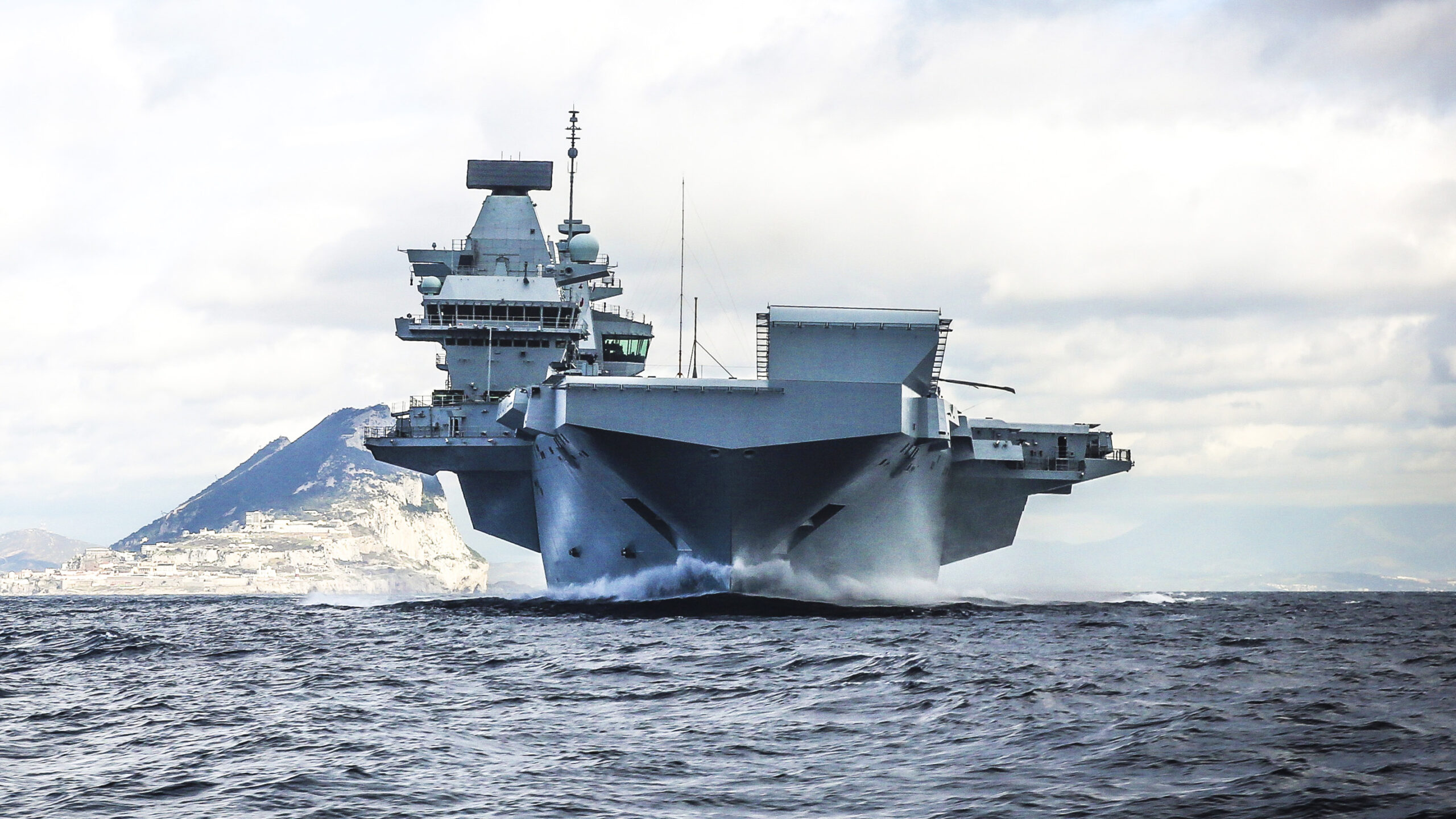
The latest Royal Navy carrier developments were announced by Col. Phil Kelly, the service’s Head of Carrier Strike and Maritime Aviation, at the recent Combined Naval Event 2023 conference, and was reported by Naval News. Col. Kelly confirmed that, under the Future Maritime Aviation Force (FMAF) initiative, the Royal Navy is planning to retrofit arrestor gear and assisted launch equipment on its carriers.
As currently equipped, the Queen Elizabeth class warships have ‘ski jump’ takeoff ramps for their STOVL F-35Bs. An earlier idea of installing catapults and arrestor gear during the two carriers’ construction and procuring F-35C variants to equip them was turned down on cost grounds, after which the two STOVL-configured carriers were finished and put into service.
The new FMAF plan includes Project Ark Royal, which Col. Kelly explained as follows:
“We are looking to move from STOVL to STOL [short takeoff and landing], then to STOBAR [short takeoff but arrested recovery], and then to CATOBAR [catapult assisted takeoff but arrested recovery]. We are looking at a demonstrable progression that spreads out the financial cost and incrementally improves capability.”
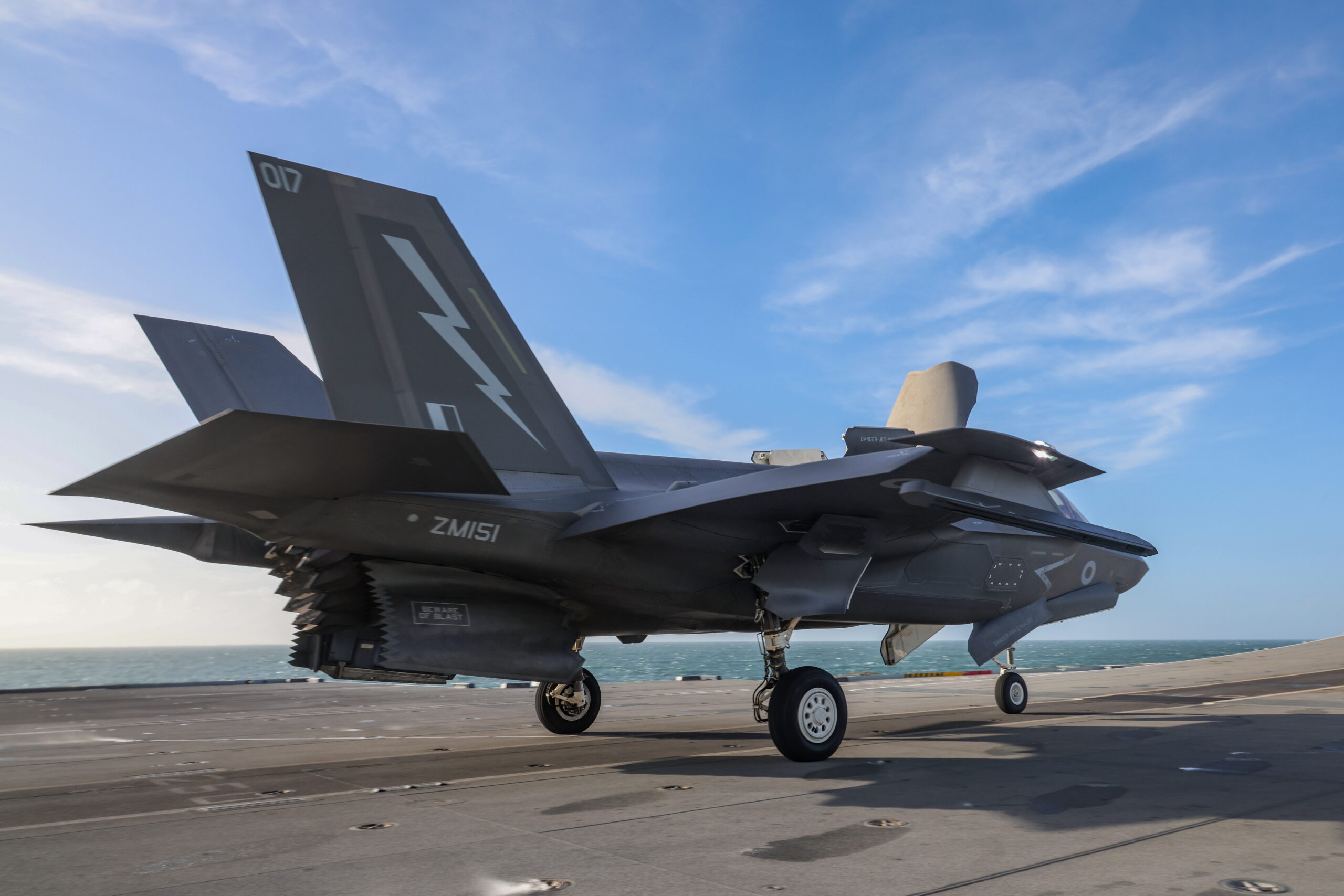
In this way, Project Ark Royal (named after the Royal Navy’s last aircraft carrier that was capable of CATOBAR operations), should see the Queen Elizabeth class vessels start to operate drones able to undertake a variety of missions and then increasingly heavier, complex, and higher performance ones. Later on, full CATOBAR capability could also add fixed-wing crewed aircraft, too.
Col. Kelly confirmed that the first part of Project Ark Royal this November will see a Mojave drone launched from a Royal Navy carrier off the U.S. east coast. As the Mojave already offers impressive STOL capabilities, no launch and recovery systems will be needed at this point.

Col. Kelly explained that the Mojave is able to take off in 300 feet, which is easily already available with the Queen Elizabeth class. However, he did add that design work had been completed for modifications that would extend the carriers’ usable runway for drones to 700 feet, which would include adding sponsons to the ships.
Under a $1.9-million contract, General Atomics will use its Mojave to “demonstrate a threshold capability for a short takeoff and landing uncrewed air vehicle” aboard the HMS Prince of Wales aircraft carrier.
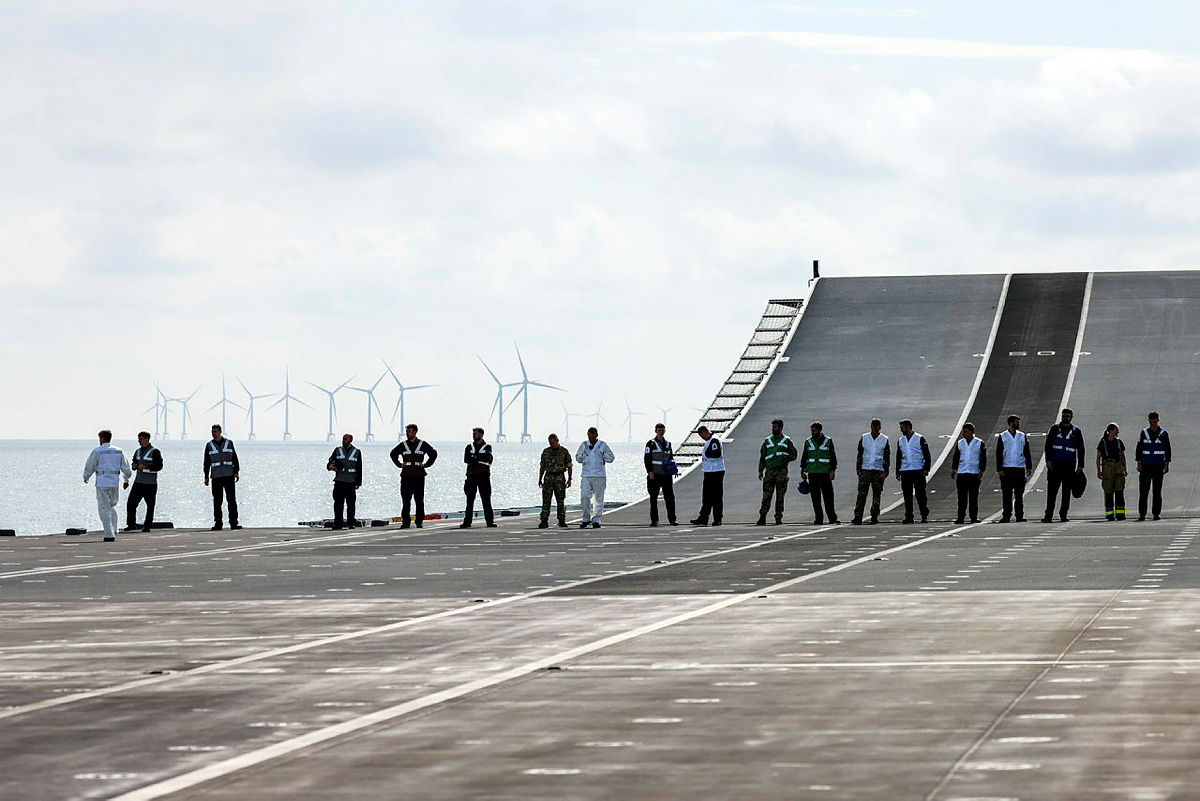
Once the STOL concept is proven out with the Mojave, the Royal Navy intends to add some kind of recovery system to the Queen Elizabeth design, allowing operations by larger fixed-wing drones. Uncrewed aircraft in this category are an aspiration that the Royal Navy is already working toward under Project Vixen, which you can read more about here.
Ultimately, the Queen Elizabeth class design would be reworked with catapult launch gear, allowing the warships “to operate the heaviest aircraft you can imagine,” in the words of Col Kelly. That would include larger, high-performance drones, but potentially also crewed fixed-wing aircraft, which would be a very significant development for the Queen Elizabeth class. As it stands, the carriers are unable to operate fixed-wing airborne early warning aircraft or airborne tankers, putting limits on their offensive operations. In the future, these functions could potentially be taken on by a catapult-launched fixed-wing aircraft, whether crewed or uncrewed.
According to Naval News, the Royal Navy is already exploring different catapult launch systems, with options including the U.S.-developed Electromagnetic Aircraft Launch System (EMALS), the introduction of which has been far from trouble-free, as well as the U.K.-developed Electro Magnetic Kinetic Induction Technology demonstrator. Finding room for complex launch and recovery systems, as well as fielding the manpower to maintain and operate them will be a challenge no matter how much extra space the vessels have to accommodate them.

Back in 2021, the U.K. Ministry of Defense put out a request for information (RFI) for “aircraft launch and recovery equipment.” This RFI called for information on assisted launch and arrested recovery options “for a range of air vehicles, which would be suitable to fit a vessel within three to five years,” as part of the Future Maritime Aviation Force.
As we have examined in the past, however, the launch and recovery systems required for non-STOVL operations are just one part of a much larger puzzle. The Royal Navy will also need to develop control stations, data links, unique procedures, and much more to ensure the drones can be safely and effectively integrated within the carrier air group, for example. The lack of an angled landing area, used to enable simultaneous launch and recovery operations is another issue, although the Queen Elizabeth class has a lot of width to its deck space that may be able to be adapted to accommodate this, at least to some degree. The existing takeoff ramps, tailored for the STOVL F-35B, may also need some kind of reworking to make them suitable to catapult launch drones or even manned aircraft, too.
Navy Lookout has a good graphic showing what some of these alternations could look like that you can check out here.
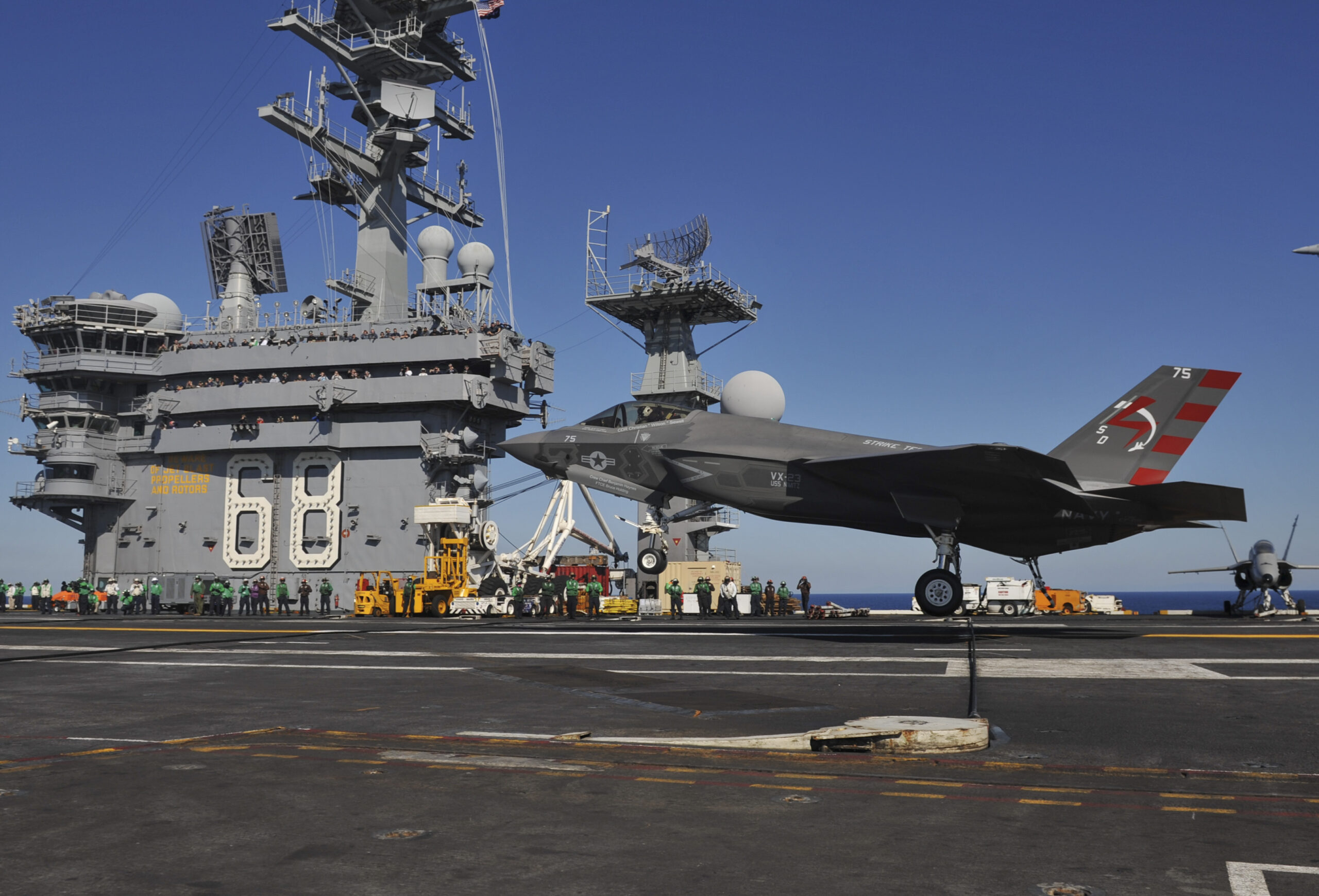
At this stage, the FMAF plan is still very much a research and development effort and it may still not result in the Royal Navy operating larger drones, let alone additional fixed-wing aircraft types from its carriers. However, it is very clear now that the United Kingdom is very seriously looking at ways to radically overhaul the kinds of aircraft that its carriers can operate, starting with drones.
It’s also worth noting that the Royal Navy has already begun more modest trials involving smaller, jet-powered drones launched from one of its carriers in 2021. These initial tests, which you can read more about here, involved the QinetiQ Banshee Jet 80+, best known as a target drone, onboard the HMS Prince of Wales. The drone demonstrated the potential for flying future adversary missions from the carriers, as well as pointing the way to embarking more capable operational uncrewed vehicles.
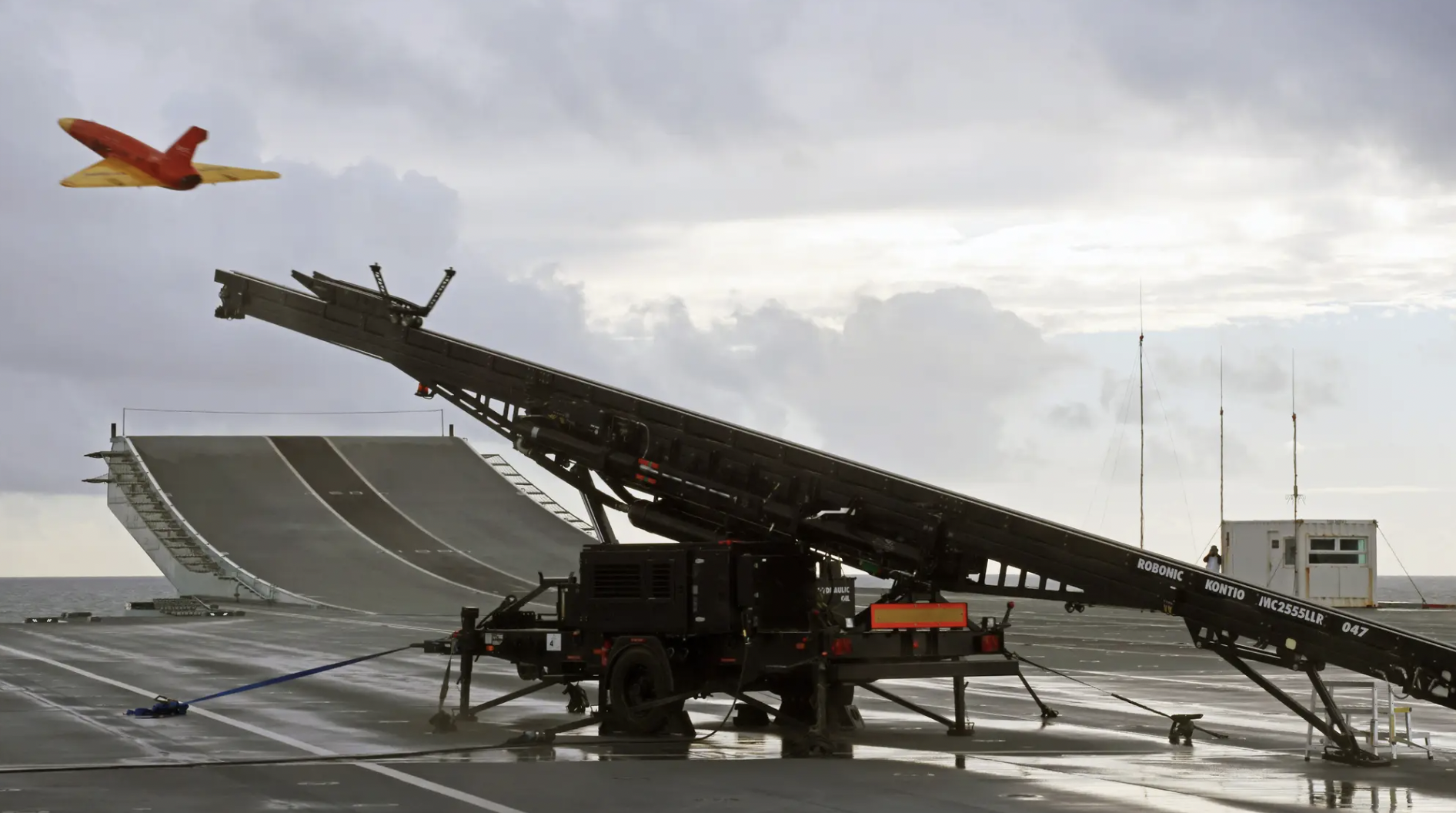
The Banshee can be launched using a portable catapult from the deck of an aircraft carrier, or potentially any other large vessel, and is recovered via parachute after completing its mission. Though the parachute recovery method could allow for the drones to come down in water, on these trials, however, they touched down on dry land.
At the time, the Royal Navy said the Banshee could be suitable for “testing future sensors, weaponry, and radio equipment,” in addition to flying as an adversary asset, simulating a fast jet or anti-ship missile.

The Royal Navy’s wider evaluation of smaller carrier-based drones is known as Project Vampire, which specifies the use study of “lightweight, fixed-wing carrier-borne crewless autonomous systems,” for which the Banshee provides a useful surrogate.
As to what types of drones we might see aboard U.K. carriers in the next phases of the Future Maritime Aviation Force effort, Project Vixen, at the larger end of the UAV spectrum, is assessing a wide array of operational and support missions, including aerial refueling — a role being developed by the U.S. Navy’s MQ-25 Stingray — as well as strike, potentially in a loyal wingman-type role, networked together with F-35Bs. Other missions could include surveillance and electronic warfare.
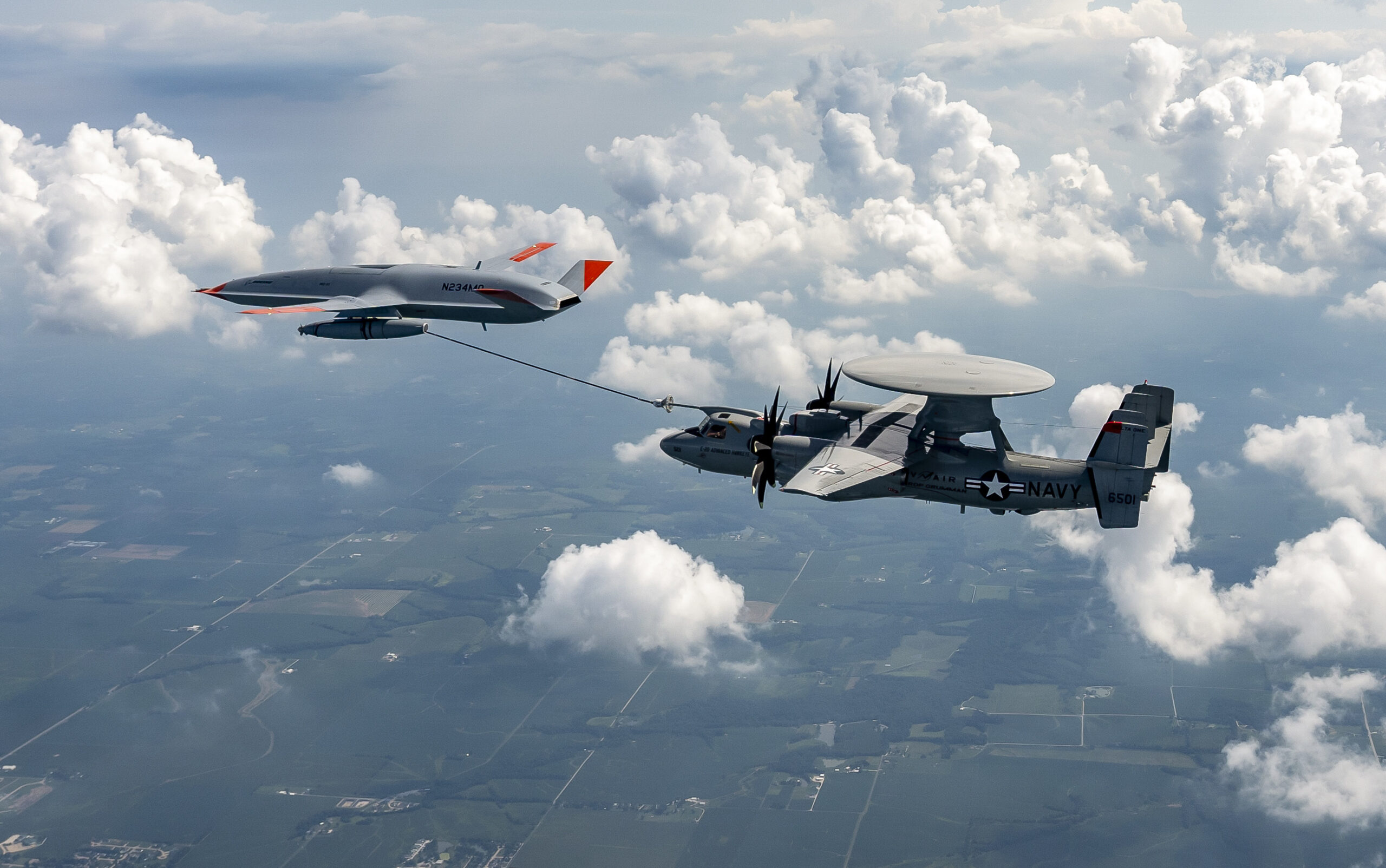
As well as the MQ-25, the Boeing MQ-28 Ghost Bat, a loyal-wingman-type drone designed by the company’s Australian subsidiary, seems to have also garnered official interest in the United Kingdom. In February, Rear Adm. James Parkin, Director Develop for the Royal Navy, gave a presentation that included a slide with a Boeing rendering showing a variant or derivative of the MQ-28 with a visible tailhook landing on a Queen Elizabeth class carrier.
In the past, and in parallel with the Royal Navy’s drone efforts, the Royal Air Force had been working on the Team Mosquito project as part of the Lightweight Affordable Novel Combat Aircraft (LANCA) initiative. Mosquito, however, was canceled in July last summer. There had been reports in the past that the two services were working together to study potential platforms for both Mosquito and Vixen, although that possibility would now seem to have been ruled out.
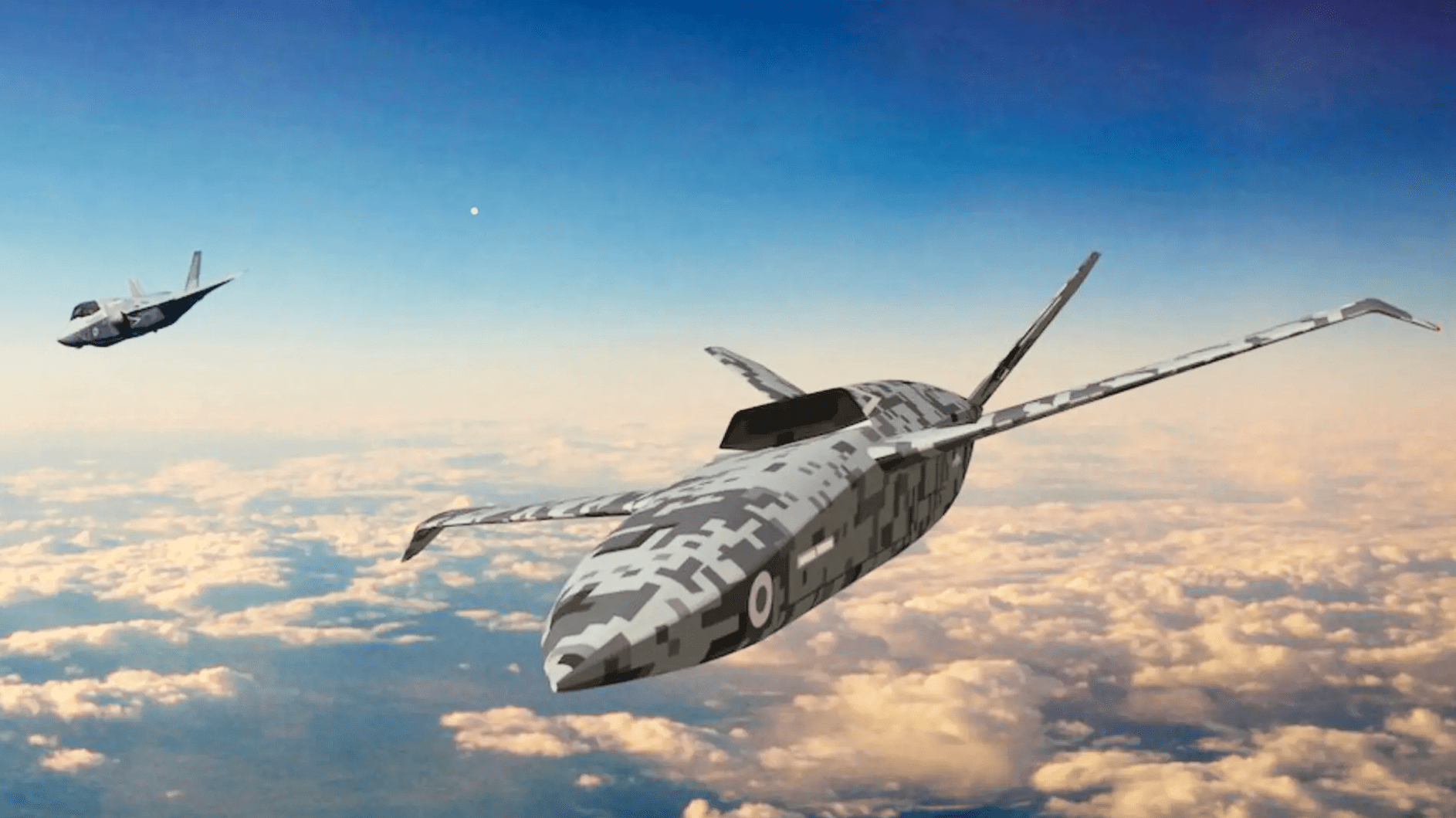
If the Royal Navy were to provide a true CATOBAR capability, even for manned platforms, on their carriers, it could invite U.S. and French deployments of Super Hornets and Growlers, F-35Cs, and Rafale-Ms aboard these ships. That would be especially useful if the U.K. does not buy enough F-35Bs to provide airframes as needed for deployments. CATOBAR would also increase the range and punching power of its air wing, as the F-35Bs are currently limited to 1,000-pound-class weapons internally and have a significantly smaller combat radius than their tailhook-equipped counterparts.
Whatever happens, there is no doubt that introducing ‘cat and trap’ equipment to its carriers will be a complex and costly undertaking for the Royal Navy. With that in mind, it could be the case that a decision is ultimately made to concentrate on STOL, or possibly STOBAR drones, rather than CATOBAR ones, let alone a new class of fixed-wing crewed aircraft. Still, this would be a massive enhancement. Regardless, future defense reviews will very likely shed more light on exactly how realistic these aspirations are, from a fiscal perspective.

Here it should also be considered that the United Kingdom is not the only nation currently looking to add fixed-wing drone capabilities to its carrier force, with Turkey having taken a notable lead in this area, at least in terms of its aspirations. The TCG Anadolu, the Turkish Navy’s largest warship, is planned to serve not only as an amphibious assault ship but also as a platform for different tiers of armed drones.
Earlier this year, it was reported that the Anadolu would receive modifications including a ‘roller system’ at the bow to help launch drones, arresting gear, plus safety nets for the recovery of smaller types of drones. Again, it remains to be seen just how realistic this goal is, although Turkey is swiftly developing a range of uncrewed aircraft that could help achieve it. China, too, is looking to deploy advanced fixed-wing drones aboard its carriers and amphibious assault ships in the not-so-distant future.
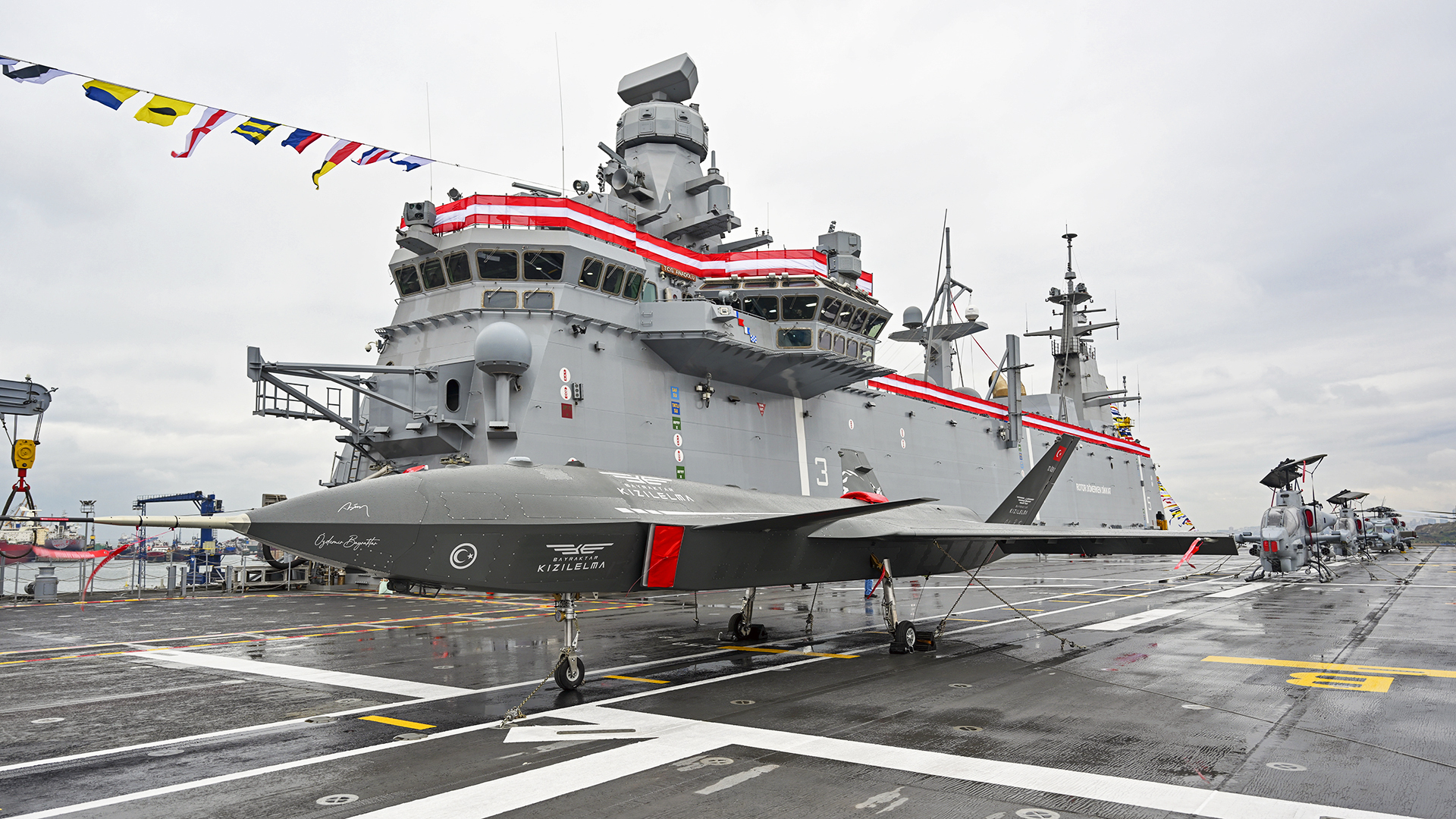
Japan is also deep into modifying its massive ‘helicopter carrying destroyers’ for enhanced aviation operations. In the case of these Izumo class ships, they are being transformed into F-35B carriers, which has required major alternations to the still very young ships.
The truth is that even the Mojave alone would bring advantages to the Royal Navy, with long endurance that would permit a range of surveillance missions, as well as a very useful strike payload of up to 16 AGM-114 Hellfire missiles. The drone could also be used as a networking and communications relay node. Even at the smaller end of the scale, drones like the Banshee could help the Royal Navy to field large swarms of lower-cost drones, which could carry out missions including strike, electronic warfare, and surveillance. All in all, the British plan seems to provide more evidence that advanced drones and carriers are a potentially excellent match, something that is reflected in U.S. plans to have 60 percent of its carrier air wing consisting of drones in the future.
As far as these British carrier-based drone ambitions are concerned, it’s clear that bringing such capabilities to any kind of aircraft carrier is a significant challenge. Even more so, when that carrier requires considerable modifications to make that happen. But it’s now abundantly clear that the U.K. Royal Navy wants to move in this direction, and it will be highly interesting to see the results.
Contact the author: thomas@thedrive.com
